There are currently a number of attractive markets for technology oriented businesses to pursue. One such area is the 5G cellular market with opportunities to develop products for many use cases. A recent Ericsson Mobility Report forecasts incredible growth opportunities for various use cases within the cellular market. For example, cellular IoT connections are expected to grow from 1.9 billion in 2021 to 5.5 billion in 2027. Fixed Wireless Access (FWA) connections are projected to grow from 90 million in 2021 to 230 million in 2027. With such high-growth market opportunities, many semiconductor companies and systems OEMs are already pursuing various use cases for offering products. Many companies are also pursuing new entrance into this market. With 5G New Radio (NR) as the radio access technology for 5G mobile network, market success relies on rapid, cost-effective implementation.
All businesses desire a few things that are essential for profitable growth, no matter what markets they compete in. Those few things are: Easy development efforts at low costs. Rapid time to market for their products. Not wanting to be captive to high cost suppliers. And, of course easy entry for themselves into attractive market segments. The 5G cellular market is no different and a Software Defined Radio (SDR) based implementation may appear to be a good approach to play in that market. But the downside of SW centric implementation is power consumption. A key aspect of 5G NR specification is its focus on significant enhancements to solution flexibility, scalability, efficiency and power usage. A hardware implementation approach can deliver well on these aspects and does not have to be cumbersome and cost-prohibitive.
The above is the context for a recent product announcement from CEVA. Their PentaG2 5G NR IP platform substantially lowers barriers for semiconductor companies and OEMs to enter the cellular market segments. As the leading licensor of wireless connectivity, smart sensing technologies and integrated IP solutions, CEVA was the first to offer a 5G NR IP platform (PentaG) back in 2018. The platform has found wide adoption and has shipped in millions of 5G NR smartphones and mobile broadband devices to date. The current announcement is the 2nd generation of the platform and includes all the key building blocks for a full LTE/5G modem design.
The following provides some insights into the PentaG2 5G NR IP platform.
Optimizing Modem Processing Chains
The PentaG2 IP platform integrates low power DSPs with many specialized programmable accelerators for optimal modem processing chains. The accelerators are used for a complete end-to-end acceleration of uplink and downlink processing for both data and control channels, offloading the DSP cores from all data-path operations. Platform is still highly flexible by using efficient DSP controller cores to configure the HW elements. Each accelerator comes with standard AXI interface for ease of integration and allowing customers to add their own IP and secret sauce. Accelerators can be directly cascaded to form modulation and demodulation chain pipelines, without any need to buffer or access the DSP core for each operation. The platform includes a complete L1 SW functional implementation of the main 5G Rx and 5G Tx processing chains. The result is a 4X improvement in power efficiency over its predecessor, the PentaG platform. Refer to the Figures below for the various CEVA accelerators included with the PentaG2 platform.
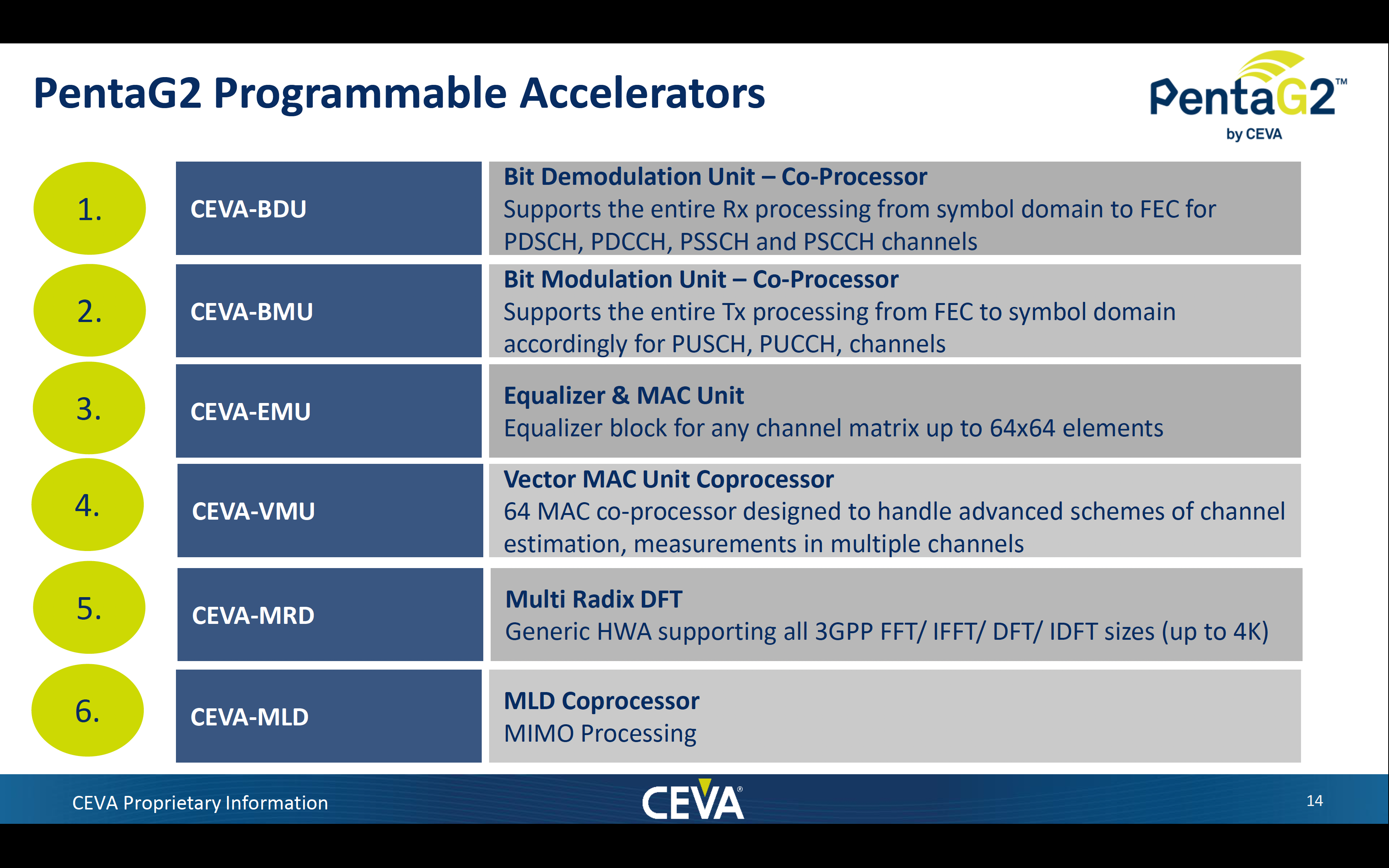
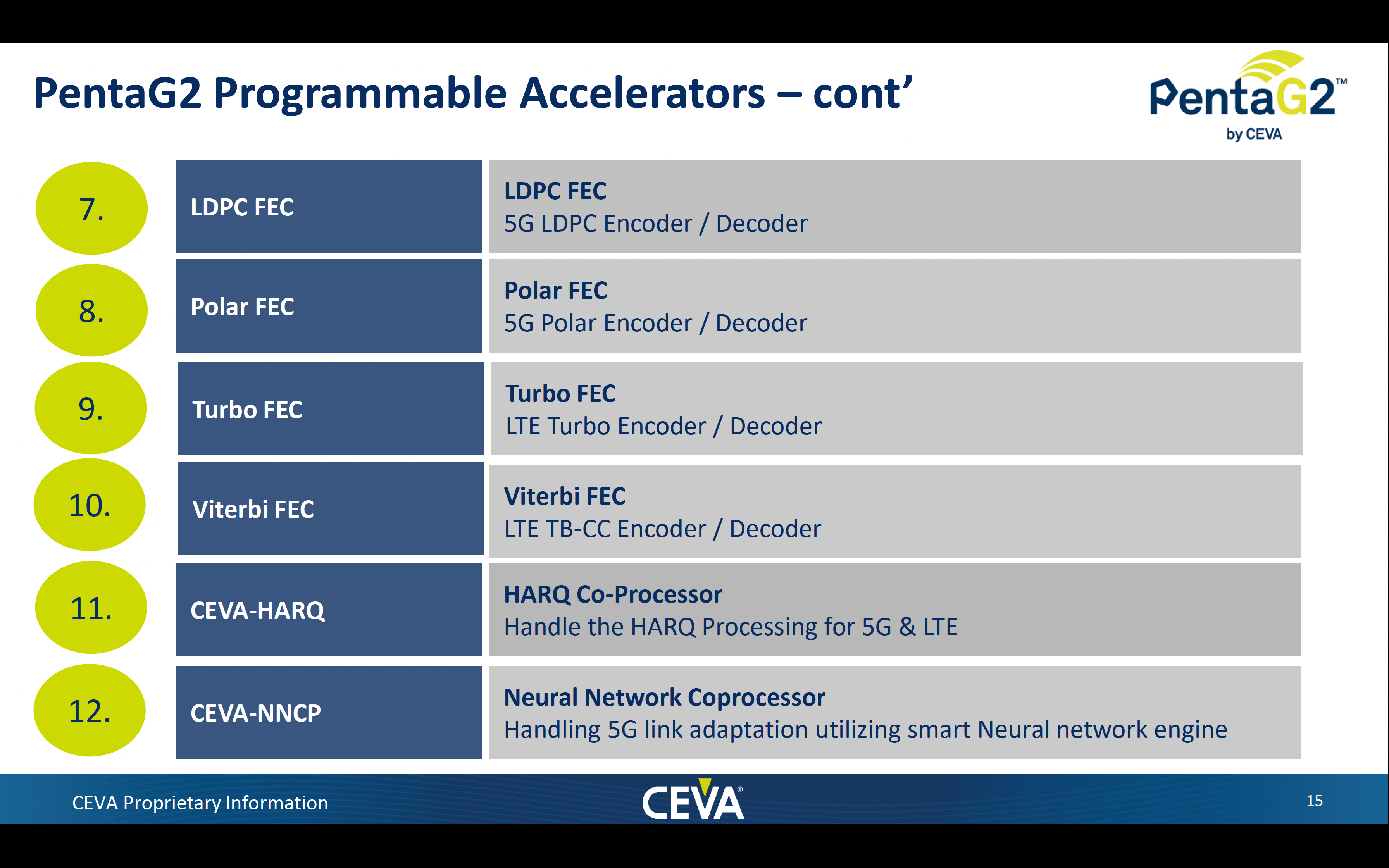
DSP Capabilities
The platform also includes field-proven low-power scalar and vector DSPs. The scalar DSP is used for PHY control, hardware acceleration scheduling and running the protocol stack. The vector DSP with 5G ISA extensions is used for channel estimation related workloads.
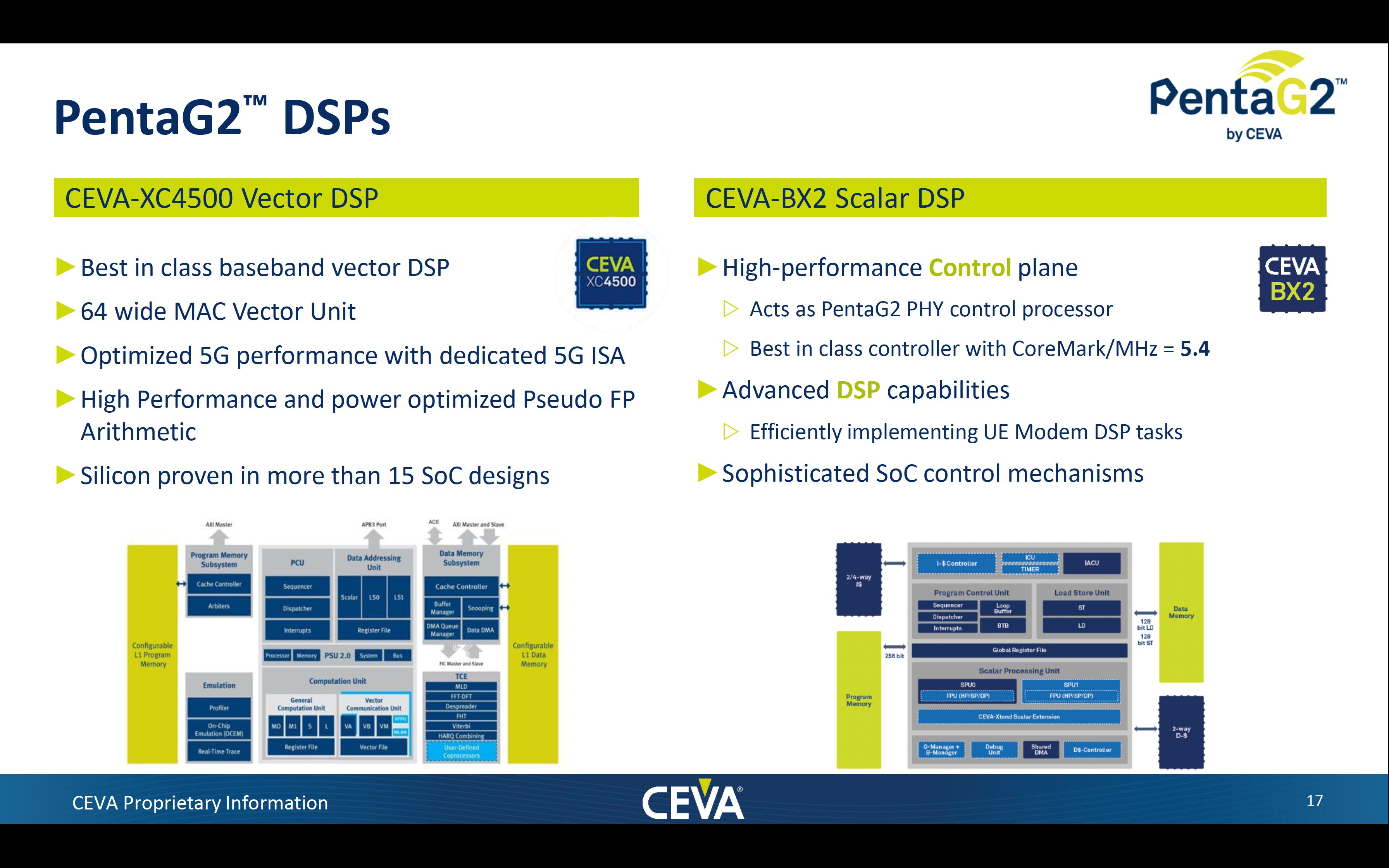
Current PentaG2 Platform Configurations
The PentaG2 platform is currently offered in two configurations. Both configurations allow for customers to incorporate their proprietary algorithms and IP as the platform supports standard AXI interfaces.
The PentaG2-Max configuration is for supporting eMBB use cases in handsets and CPE/FWA Terminals and mmWave, NR-Sidelink and cellular V2X (C-V2X) applications as well as URLLC enabled AR/VR use cases.
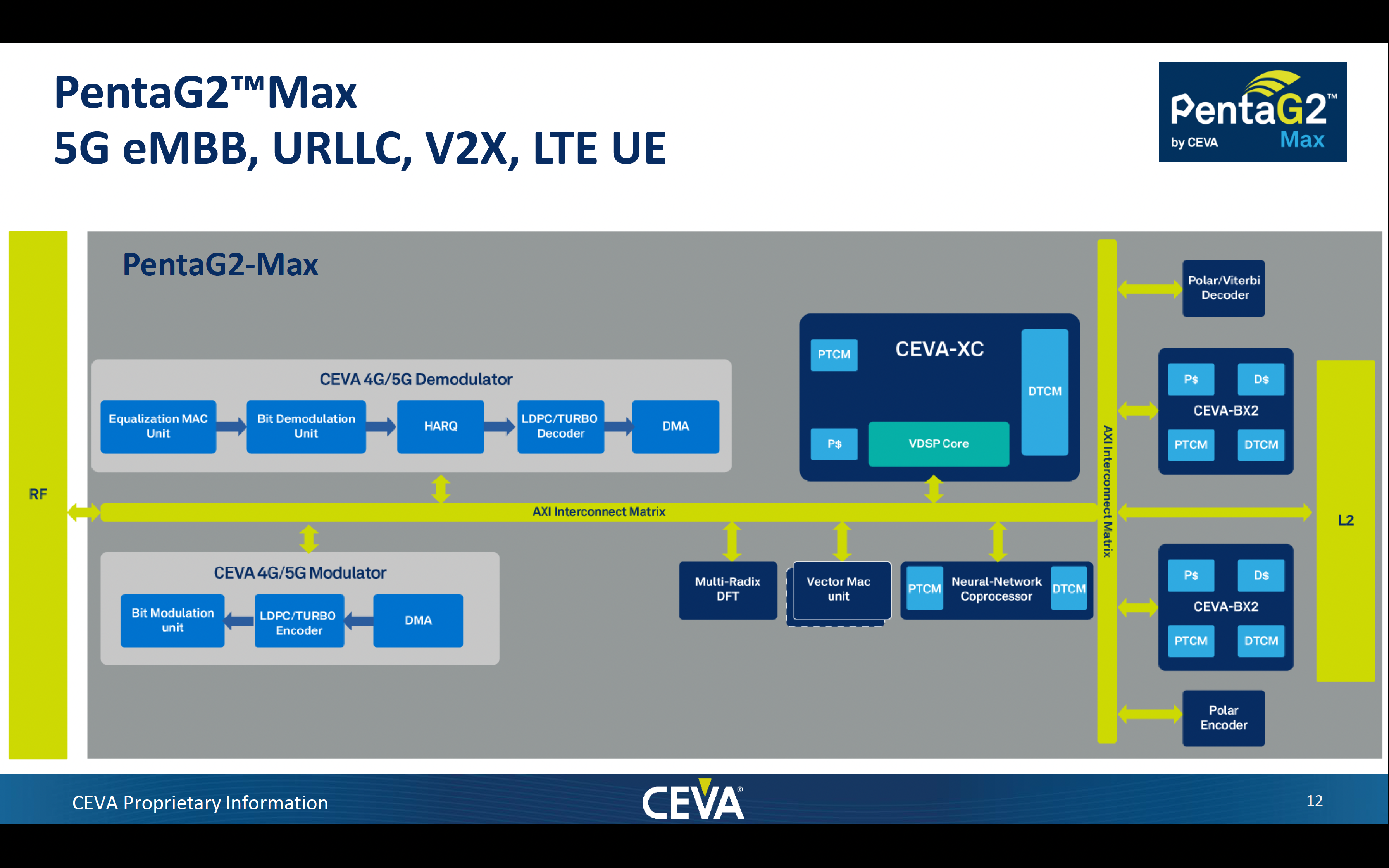
The PentaG2-Lite configuration is a compact and lean implementation, supporting reduced capability (RedCap) use cases including LTE Cat1 and future 3GPP Rel 17/Rel 18 RedCap. This platform configuration is ideally suited for tight integration into SoCs and for the IoT.
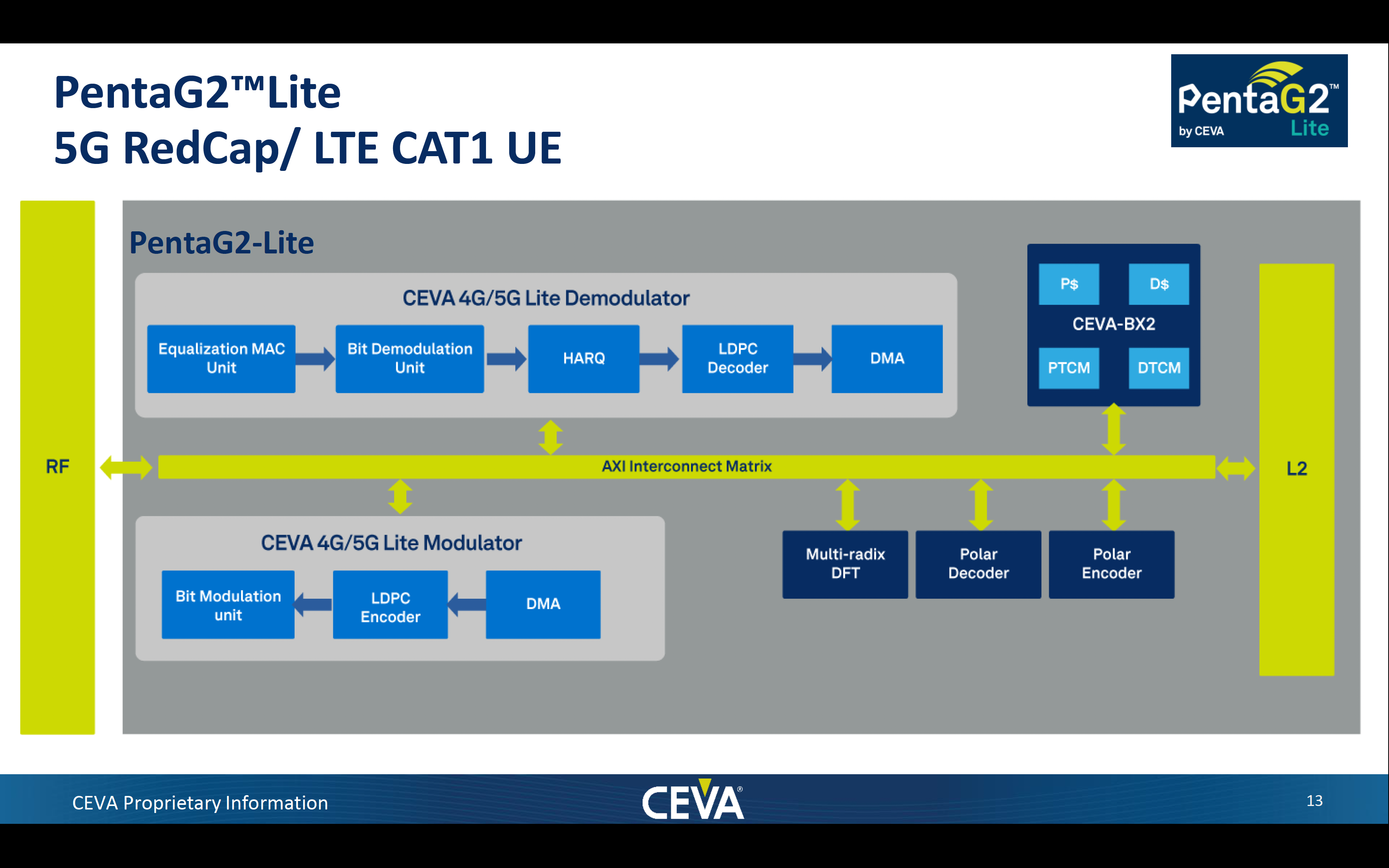
To learn more details, visit the PentaG2 product page.
Support for Simulation and Emulation
The PentaG2 platform deliverables include System-C simulation environment for modeling and debugging the designs. The PentaG2 SoC simulator interfaces with MATLAB platform for algorithmic development. A PentaG2-based system can be emulated on a FPGA platform for final verification.
Availability
PentaG2 is immediately available for licensing to lead customers and for general licensing in the second half of 2022.
Intrinsix IP Integration and Design Services
Customers can implement their PentaG2-based SoC using their in-house chip design teams or leverage CEVA’s Intrinsix IP integration services division. CEVA acquired Intrinsix in 2021 to bring additional offerings and services to its customer base. An example of a recent such offering is the CEVA Fortrix™ SecureD2D IP for securing communications between heterogeneous chiplets. Read more about SecureD2D IP here.
Also read:
CEVA Fortrix™ SecureD2D IP: Securing Communications between Heterogeneous Chiplets
AI at the Edge No Longer Means Dumbed-Down AI
RedCap Will Accelerate 5G for IoT
Share this post via:
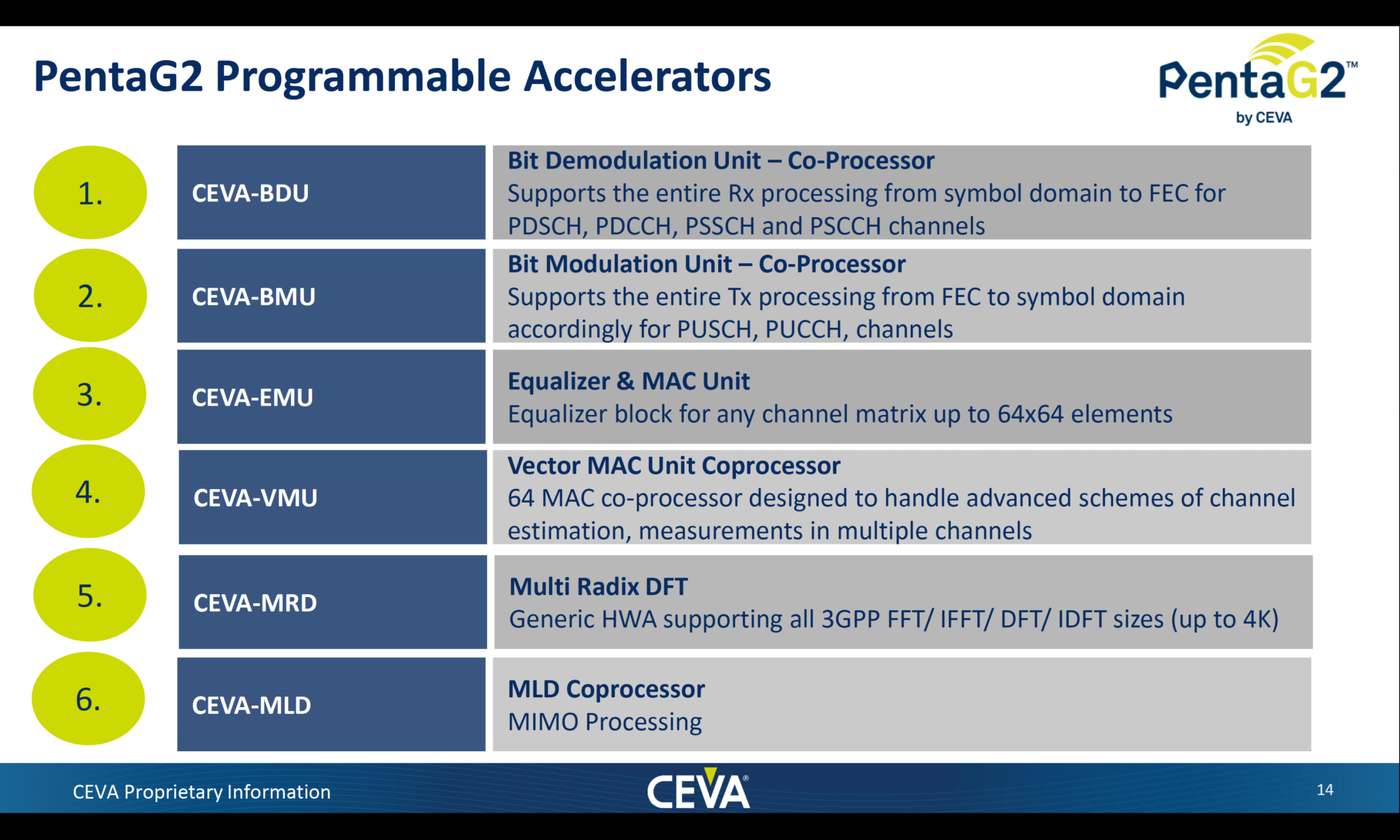





Comments
There are no comments yet.
You must register or log in to view/post comments.